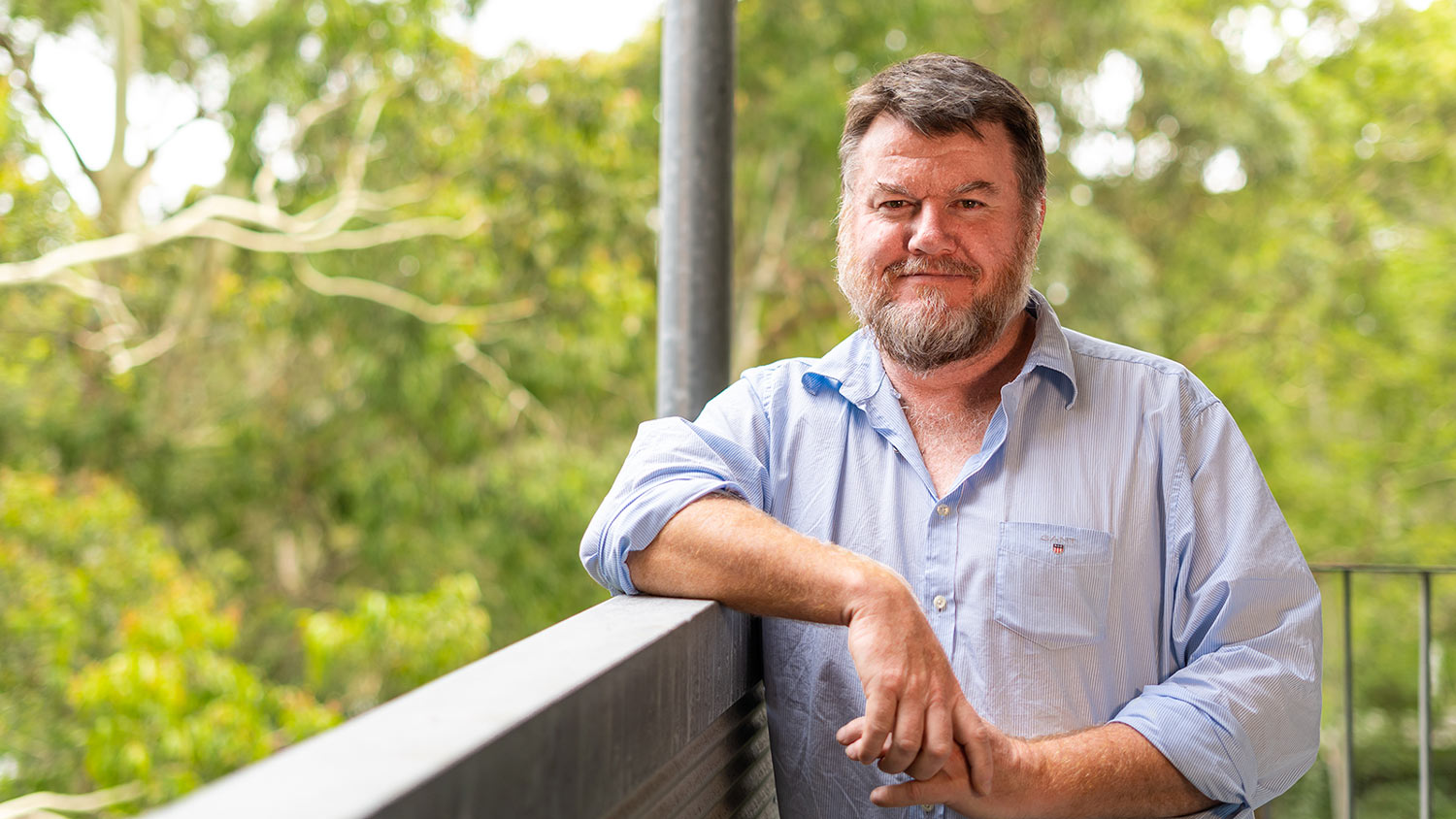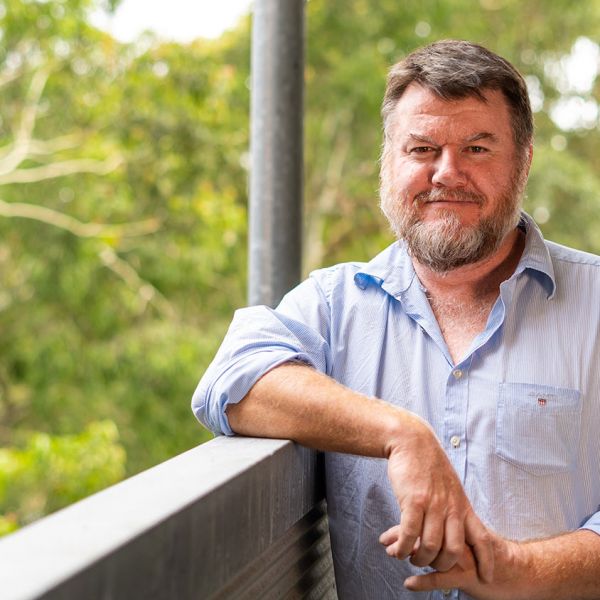Ensuring future generations enjoy our world’s biodiversity
Professor Matt Hayward
Dubbed the world’s leading lion scientist, Professor Matthew Hayward is on a quest to give biodiversity and endangered species a chance to survive. Working on a wide range of co-designed projects globally, his research is seeing real-world benefits.

Matt is an applied conservation scientist. This means he talks to conservation managers in the private, non-governmental and government sectors about the problems they’re facing and works out ways to solve them.
Before moving into academia, he worked as an environmental consultant, conservation manager and researcher in the private sector for NGOs and government. This genuine experience gives Matt a unique understanding of the challenges and opportunities in his field.
From African lions to Welsh red squirrels
Matt’s academic work began during his PhD when Western Australian conservation managers wanted to know why quokkas were scarce on the mainland.
Through studying them he discovered that foxes and fire influenced their population sizes. This work was later referenced in a Department of Environment and Conservation Quokka Recovery Plan.
His work continued in South Africa, where the Addo Elephant National Park manager wanted to know how many lions the park could sustain. What he found is that lion (and all African predators) density is related to the density of their preferred prey.
Matt then completed a Marie Curie Post-Doctoral Fellowship at the Polish Academy of Science’s Mammal Research Institute in Białowieża Primeval Forest before returning to Australia as a regional ecologist for the Australian Wildlife Conservancy, overseeing six reserves.
He also lectured at Bangor University in North Wales, leading research on red squirrel and pine marten reintroduction, human-wolf interactions and the spatial ecology of various species, including peccaries, leopards, elephants, invasive snakes and the impact of neonicotinoids (a class of insecticides) on burrowing mammals.
In 2017, Matt joined the University of Newcastle, where he now leads the Conservation Science Research Group.
Addressing the biodiversity crisis
Matt’s high level research goal is to identify ways that biodiversity can persist alongside the burgeoning human population.
“Habitat loss and degradation, invasive species, climate change, pollution and overharvesting are the main threats biodiversity faces, but these largely stem from human overpopulation and overconsumption,” says Matt.
“We need to address this now, to give biodiversity a chance to get through the next 50 years or so, after which our population will begin to decline to a more sustainable level, and biodiversity will be more secure.”
If we can keep species around for this time, he continues, we’ll see a world with a smaller human population size, using fewer resources per capita, and being almost entirely urbanised, meaning there’ll be more space for biodiversity to roam.
Matt shares that he’s always had a love of biodiversity and natural places—something he describes as a white man’s connection to country.
“The more I learnt about biodiversity and the crisis it faces, the more urgent I’ve felt in the need to ensure biodiversity persists into the future.”
Matt has also worked on more conceptual issues, like how political ideology affects conservation outcomes, a kind of transdisciplinary link between conservation and social sciences he says is critical to society’s ability to overcome the biodiversity crisis.
A system to solve local conservation problems
Currently, Matt works intensively with the Hunter-Central Coast branch of the NSW Department of Climate Change, Energy, the Environment and Water to help them solve conservation problems.
This has entailed working on tooranna (broad-toothed rat), green-and-golden bell-frogs, parma wallabies, greater gliders, eastern pygmy possums and Littlejohn’s tree frogs. The information they discovered is being used to improve conservation management and monitoring of threatened species and threatening processes.
From a national perspective, Matt and his team’s BIOMON biodiversity monitoring system will change the way biodiversity is monitored. The system involves a network of sensors that detect bird, bat, and frog calls and identify them on the sensor. The results are then sent back to the office computer.
Matt explains that it can save vast sums of money sending people into the field to collect this information and to listen to recordings of calls back in the lab.
They’re planning to expand this system to include camera trap images and plant pollen and fungal spores in the near future.
Tracking rodents on Norfolk Island
Another of Matt’s most recent large collaborative projects has been working with Parks Australia staff from the Norfolk Island National Park to identify the challenges they’re facing with managing introduced rodents and what information would help them improve the control of those rodent species.
Norfolk Island is home to a unique array of birds, including the endangered Norfolk Island Green Parrot, and introducing rodents has historically led to the extinction of multiple bird species.
The research has involved setting up hundreds of traps to capture live rodents. Once captured, the team applies fluorescent yellow, non-toxic powder to their backs before releasing them. The powder then rubs onto plants as they move around. At night, they then use UV torches to illuminate the glowing trails, helping them study the rodents' fine-scale movements.
The work is being funded by the National Environmental Science Program’s Resilient Landscapes Hub. Matt shares they now have an excellent project investigating how the movement patterns of rodents affect their re-colonisation rate after control activities and how this has flow-on effects on other species.
The co-design process ensures that their results will be used by their co-design partners.
Research yielding real-world benefits
Scientists like evidence to support their statements, and Matt’s work has yielded tangible outcomes with proven conservation benefits.
Reserves across Africa have used his work on lions to manage their populations, work out ways of increasing populations and identify previously unknown illegal hunting offtake.
He has published over 200 scientific articles, dozens of book chapters and a number of books. His work and its impact have led to him recently being acknowledged as the world’s leading lion scientist. His research has been cited in journal articles such as Sobratee N, Slotow R. A Critical Review of Lion Research in South Africa.
The information is also being applied by Indian conversation managers to assess how many tigers each park can sustain and where poaching hotspots are located.
Beyond this, Matt’s research is being used in other threatened species recovery plans and conservation advice documents to direct conservation managers to effectively conserve our threatened species.
The urgency and the joy
Matt shares that while the lack of secure employment is a challenge in research and academia (he was only earning $2,000 a year while working in Africa), conversation research is a way of life for him. His passion for biodiversity and research makes these kinds of barriers seem minor.
“It’s the urgency of the threat to biodiversity that motivates me each morning, but it is the joy of seeing wildlife in their natural places that excites me most.”
“I feel proud when showing my kids some of the rare species we work on and thinking that our actions are increasing the likelihood that my grandkids will also get to see these amazing species.”
The University of Newcastle acknowledges the traditional custodians of the lands within our footprint areas: Awabakal, Darkinjung, Biripai, Worimi, Wonnarua, and Eora Nations. We also pay respect to the wisdom of our Elders past and present.
